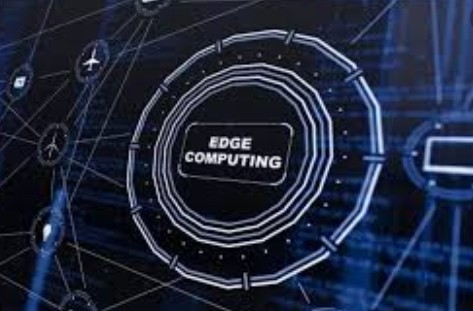Augmented reality (AR) applications are growing and attracting more and more attention because they can combine computer-generated data with the real world through hardware devices. AR applications are extremely sensitive to delays and have high requirements for computing and communication. Moreover, when executing AR applications on mobile devices, the battery consumption of mobile devices [1-3] has always been unable to meet the needs of users. expect. In order to solve this problem, literature [3-6] has proposed the use of mobile edge computing to solve the current problems. Users will migrate the computing of a lot of data involved in running AR applications to a nearby cloud server connected to the base station. Execution, compared with local computing, can save local energy consumption, compared with central cloud computing, can reduce transmission delay time.
Aiming at the problems of delay and terminal equipment energy consumption caused by high-speed data transmission and calculation, a transmission plan using equal power distribution in the uplink is proposed. First, a system model for AR characteristics is established based on the collaborative attributes of augmented reality (AR) services; secondly, the system frame structure is analyzed in detail, and constraints are established to minimize the total energy consumption of the system as the optimization goal; finally, while ensuring delay Under the condition that the resource consumption and power consumption meet the constraints, a mobile edge computing (MEC) resource optimization mathematical model based on convex optimization is established to obtain the optimal communication and computing resource allocation plan. Compared with independent transmission, the total energy consumption reduction of this plan is 14.6% when the maximum delay time is 0.1 s and 0.15 s respectively. The simulation results show that under the same conditions, compared with the optimization plan based on independent transmission of users, the equal-power MEC optimization plan that considers collaborative transmission between users can significantly reduce the total energy consumed by the system.

With the explosive increase in the number of mobile devices and the emergence of many new uses, mobile network traffic has increased exponentially. The traditional centralized network architecture cannot meet the needs of mobile users due to overloaded backhaul links and long delays. Therefore, a new architecture is proposed that opens network capabilities from the core network to the edge network, namely mobile edge computing (MEC). Mobile edge computing can provide lightweight cloud computing and storage capabilities at the edge of the mobile cellular network. For mobile The latest research results related to marginal computing are reviewed in detail: first, the development process, key issues and supporting technologies of mobile marginal computing are outlined; then, the four key research issues of MEC architecture, computing migration, marginal caching and service orchestration are discussed A comprehensive overview is given and typical use cases in mobile edge computing such as augmented reality, virtual reality, dynamic content delivery, Internet of Vehicles and Internet of Things are reviewed; finally, from mobile edge computing function enhancement, service quality assurance and security availability These three aspects foresee the open research challenges and future development trends of mobile edge computing.Edge computing gateway
Work in the literature shows that through joint optimization of the allocation of communication resources and computing resources, mobile energy consumption can be significantly reduced under delay constraints. Their work can be used on multiple users running general applications independently. However, AR applications The program has its own unique nature. All users can upload and download some of the same data, and its computing tasks are also shared on one or more servers. Therefore, communication and computing resources can be reduced by jointly optimizing communication and computing resources. overhead.
AR applications superimpose some computer images onto images of the real world through the mobile device’s screen and camera. The block diagram shown in Figure 1 illustrates this process. Five components are required to complete this process [3-4]; 1) Video source, which can first obtain the original video frames from the mobile camera; 2) Tracker, which identifies and tracks the relative position of the user in the current environment; 3) Mapper, which builds a model of the current environment; 4) Object recognizer, which identifies known objects in the current environment; 5) Renderer, which displays the processed frames. The video source and renderer components must execute on the mobile device, while the calculations performed by the most computationally intensive tracker, mapper and object recognizer components can be offloaded to the cloud. In addition, if the task is offloaded, mappers and target recognizers can collect input from all user devices in the same geographical location, limiting redundant information transmitted in the user uplink. Additionally, the results of mapper and object recognizer calculations can be multicast from the cloud to all co-located users on the downlink.